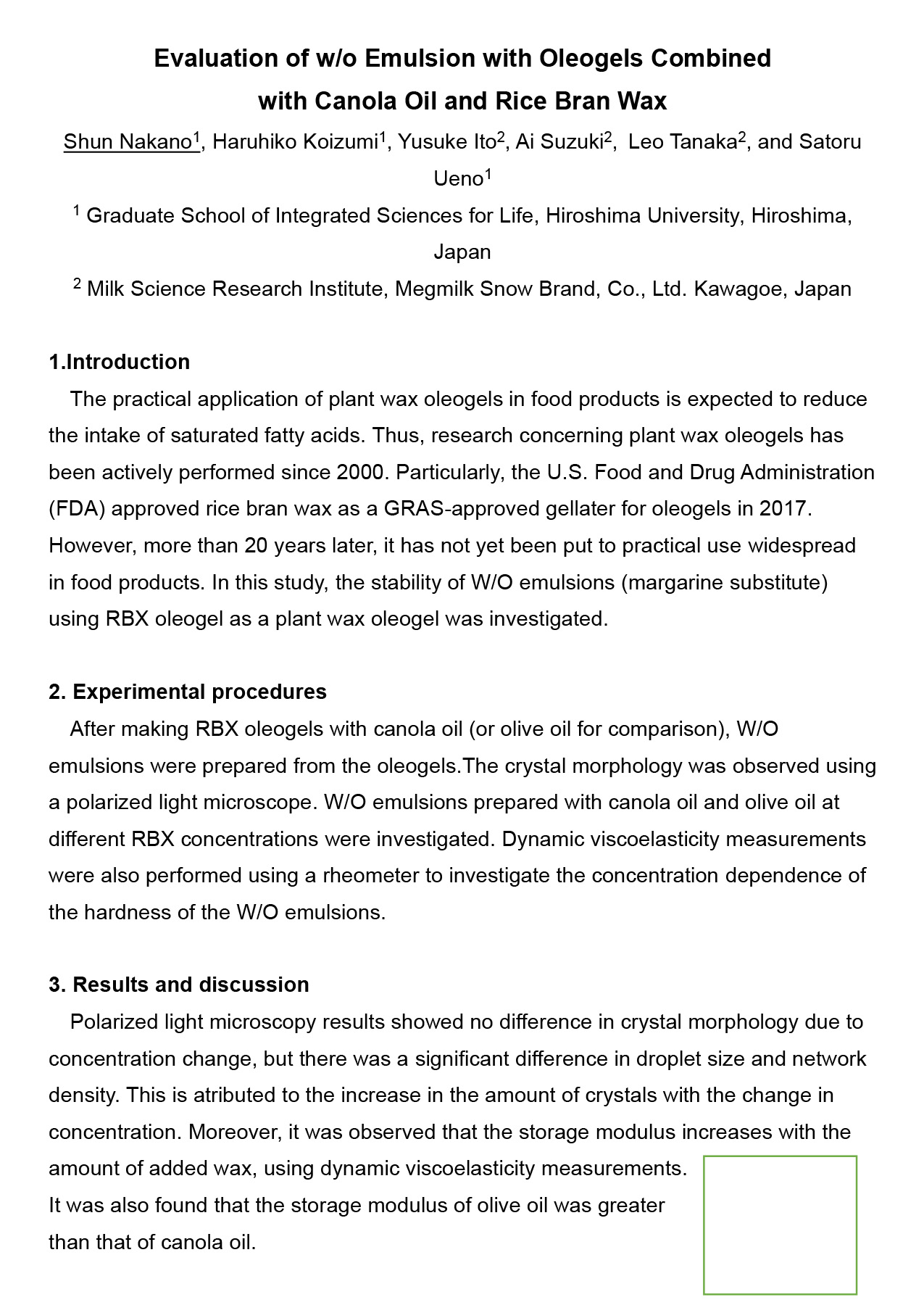1. Introduction
The practical application of plant wax oleogels in food products is expected to reduce the intake of saturated fatty acids. Thus, research concerning plant wax oleogels has been actively performed since 2000. Particularly, the U.S. Food and Drug Administration (FDA) approved rice bran wax as a GRAS-approved gellater for oleogels in 2017. However, more than 20 years later, it has not yet been put to practical use widespread in food products. In this study, the stability of W/O emulsions (margarine substitute) using RBX oleogel as a plant wax oleogel was investigated.
2. Experimental procedures
After making RBX oleogels with canola oil (or olive oil for comparison), W/O emulsions were prepared from the oleogels.The crystal morphology was observed using a polarized light microscope. W/O emulsions prepared with canola oil and olive oil at different RBX concentrations were investigated. Dynamic viscoelasticity measurements were also performed using a rheometer to investigate the concentration dependence of the hardness of the W/O emulsions.
3. Results and discussion
Polarized light microscopy results showed no difference in crystal morphology due to concentration change, but there was a significant difference in droplet size and network density. This is atributed to the increase in the amount of crystals with the change in concentration. Moreover, it was observed that the storage modulus increases with the amount of added wax, using dynamic viscoelasticity measurements. It was also found that the storage modulus of olive oil was greater than that of canola oil.
